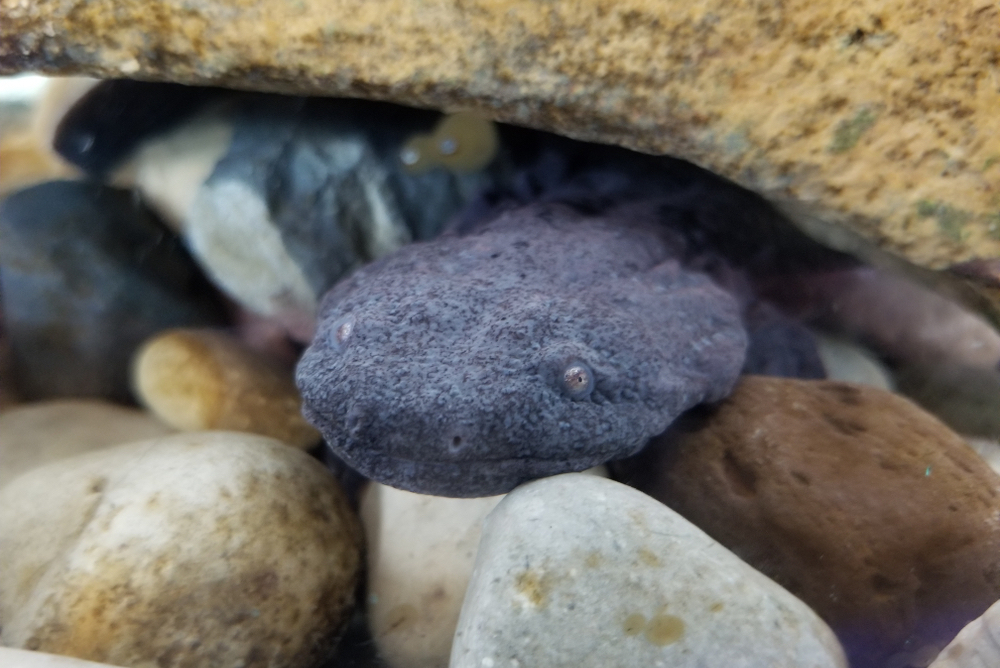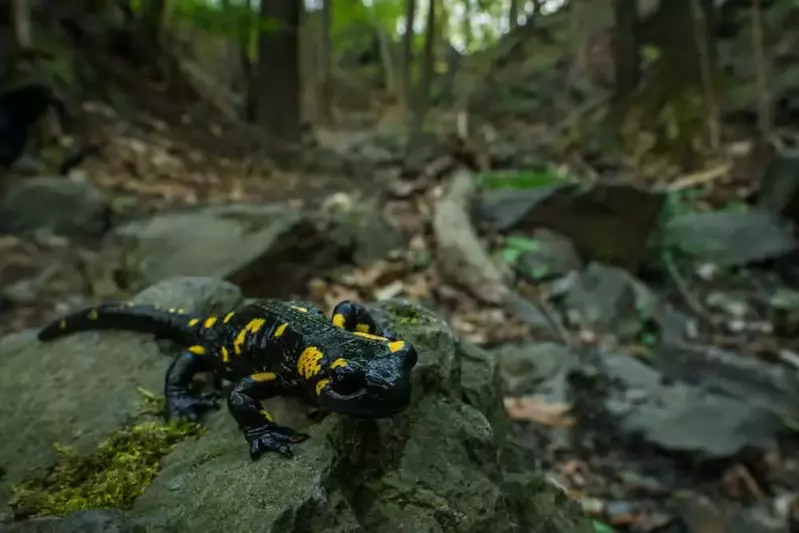One small creature that has an abundant population in Great Smoky Mountains National Park is the salamander. The area is home to around 30 different species, which makes it the “Salamander Capital of the World.” Curious about some of the species you’ll find while out exploring the many hiking trails, streams, waterfalls, and creeks? Here is a list of 4 salamanders of the Smoky Mountains you may see:
1. Red-Cheeked Salamander
The red-cheeked salamander is mostly black in color with red patches on either side of its face; they can be 3.5 to 5 inches in length. Their population is exclusive to the Smokies. The red-cheeked salamander doesn't have lungs, so it breathes through its skin in a process called cutaneous respiration. Their tails have some cool defensive mechanisms. They can release a toxic slime to ward off their much bigger predators, such as snakes, birds, skunks, and raccoons. What’s more? A red-cheeked salamander’s tail can detach completely from its body. It then wiggles around as a distraction for predators while the salamander gets away. When they aren’t playing tricks, red-cheeked salamanders sleep during the day and forage at night on snails, spiders, and worms.
2. Hellbender Salamander

Hellbenders are the largest Smoky Mountains salamanders; in fact, they’re the largest in North America, anywhere from 12 to 29 inches in length! Their bodies are gray or dark brown with wrinkles. They can camouflage in the riverbed and hide from predators. A hellbender’s skin also has a slimy mucus that protects it from predators. They locate predators, such as turtles and snakes, with their keen sense of smell. Hellbenders spend their whole lives underwater. They have flat bodies and rudder-shaped tails that help them swim fast. They hunt at night and feast on fish, tadpoles, and insects.
3. Pygmy Salamander
A pygmy salamander gets its name because it is quite small, only about 2.5 inches long! They are dark red in color with copper-colored stripes. Their tails are short and round, taking up less than half of their total body weight. Pygmy salamanders can be found on high-elevation land in moist areas, hiding under logs and bark. To avoid predators, the small creatures have a freeze response where they become motionless to minimize detection from snakes, beetles, and even bigger salamanders. Their dark color also helps them camouflage.
4. Black-Bellied Salamander

The black-bellied salamander can be dark brown or black in color with brown spots. They can range from 3.5 to 8 inches in length and have a stocky build. One unique feature of a black-bellied salamander is its ridged and curled tail. They use their tails and sharp black toes to navigate strong currents and keep from being swept away. Black-bellied salamanders are also very territorial and use chemical signals to ward off predators, such as turtles and snakes. They will hide in rock crevices to ambush their prey.
Now you know more about different species of salamanders in the national park. Want to increase your chances of seeing one during your next visit? Learn more about exploring one of the popular places to see salamanders of the Smoky Mountains, Grotto Falls!








